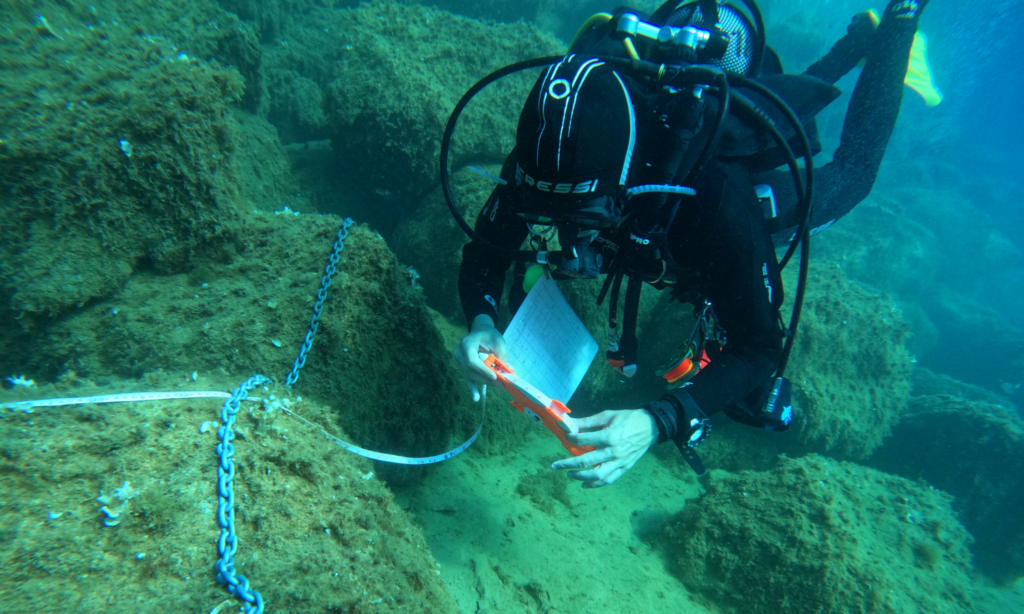Reading: 4 min
SEAM (Smart Environment Adaptative Management) is an innovative model implemented at Marina Palamós in collaboration with H2O Diving Center. It assesses the ecological status of ports and applies solutions based on science, nature, and technology.
The sustainability of marinas faces increasing challenges due to the constant interaction between human activity and the marine ecosystem. In this context, SEAM stands out as an innovative environmental management model, designed to provide accurate diagnostics on the ecological state of ports and implement science- and technology-based solutions.
Developed and implemented by Underwater Safety Programs, SEAM is supported by a multidisciplinary team of experts, including marine biologists, scientific divers, and diving professionals, all specializing in studying and preserving aquatic environments.
SEAM Foundations
a) Environmental Diagnosis: Comprehensive Port Ecosystem Assessment:The analysis of ecological quality in marinas relies on empirical data collection through rigorous scientific methodologies, including sampling, monitoring, and evaluation. Key parameters include:
b) Biodiversity and Ecological Status: Identification of species, quality bioindicators, analysis of biological communities, and detection of invasive species.
c) Environmental Conditions: Measurement of physical and chemical water parameters such as temperature, turbidity, dissolved oxygen, and salinity.
d) Sedimentation and Habitat Structure: Study of sediment deposition patterns and their impact on benthic and port biodiversity.
e) Waste Management: Identification of marine pollution sources, assessing the impact of solid waste, plastics, and fishing materials.
f) Regulatory Compliance: Assessment of the port’s alignment with current environmental regulations, alongside recommendations for improvement.

The SILMAR Stations Network
A crucial pillar in monitoring and comparing coastal and port marine ecosystems is the SILMAR Stations Network. These stations play a key role in continuously collecting scientific data on marine biodiversity and ecosystem resilience, enabling informed environmental management decisions and implementing conservation actions.
SILMAR Stations Objectives:
- Active Conservation: Contribute to the preservation of marine and coastal biodiversity in strategic areas at local and regional levels.
- Systematic Study: Promote marine habitat research, highlighting the economic and ecological value of ecosystem services.
- Adaptation and Resilience: Enhance adaptation capacity in response to climate change effects.
- Natural Capital and Blue Economy: Promote recognition of natural capital and the blue economy, raising awareness among local stakeholders about sustainable management.
- Knowledge Sharing: Disseminate acquired knowledge to encourage active and collaborative marine conservation.
SEAM Benefits
The SEAM adaptive environmental management model enables efficient, evidence-based assessment, monitoring, and optimization of marina sustainability. Its implementation not only improves the ecological quality of these environments but also strengthens their resilience to environmental and regulatory changes.
Integrating SEAM with the SILMAR Network enhances analytical and response capabilities to environmental challenges, reinforcing a sustainable management strategy based on science and innovation. These mitigation measures are key to balancing port activities with marine conservation, fostering responsible and sustainable coastal management.
With SEAM and the SILMAR Network, Underwater Safety Programs offers a comprehensive and advanced solution to transform environmental management in marinas, ensuring harmony between human development and the preservation of our valuable marine ecosystems.





